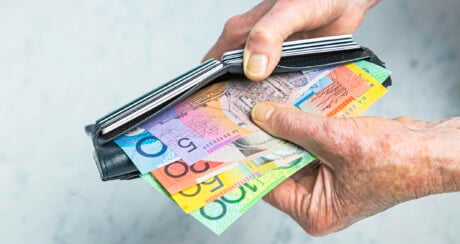It can be challenging to wrap your head around how credit card interest works. With interest rates varying between cards, banks, and welcome offers, understanding variable purchase rates is crucial for using a credit card responsibly.
What is a ‘purchase rate’ on a credit card?
The ‘purchase rate’ on a credit card is the amount of interest applied to purchases made using the card. This rate determines how much interest your credit card provider will charge if you carry a balance beyond your billing cycle.
Unlike balance transfer, cash advance and introductory, promotional rates, the purchase rate applies specifically to purchases. Interest owed is calculated separately for each transaction type.
Interest rates on credit cards are typically expressed as a variable ‘per annum’ (p.a.) rate — Latin for ‘per year’ or ‘annually’. This term is also known as the annual percentage rate (APR).
What’s average?
According to RBA statistics[1], the average rates are:
- 20.16% for personal standard cards
- 13.69% for low-rate credit cards
- 18.31% for credit card balance incurring interest.
These averages vary widely depending on the type of credit card, from low-rate to premium rewards options, with rates between 8.99% p.a. to 23.99% p.a.
» MORE: 9 things to know before getting your first credit card
What is a variable purchase rate on a credit card?
The bank can adjust the rate of interest charged when a credit card has a variable rate. This contrasts with fixed rates, which remain constant during the contract.
Variable rates allow credit card providers to respond to economic changes, cash rate movements and monetary policy adjustments.
- For example, If the RBA reduces the cash rate by 0.5%, your credit card’s purchase rate might decrease, reducing interest payments. Conversely, your purchase rate could increase if the cash rate rises, leading to higher charges.
Banks must be transparent about their rates and notify customers of any changes. You can find your purchase rate on your monthly statement, online banking, or by contacting customer support.
🤓 Nerdy Tip
Interest charges vary monthly based on your balance, number of interest-free days, transaction types, repayment dates and billing cycle. You can avoid interest by paying your balance in full before the due date.
A word of warning on introductory rates
Australia doesn’t regulate interest rates, so educating yourself on how interest is calculated on your credit card is crucial. Be wary of low or no-interest offers and introductory balance transfer rates meant to attract new customers, as these promotions usually last up to 12 months before increasing.
- For example, the NAB Low Rate credit card offers 0% interest for 28 months, then switches to 21.74%, much higher than the average rate.
Also, watch for alternative fee structures, lucrative points deals, expensive annual fees, and other clever catches.
- For example, CommBank Neo is an interest-free card, but it charges a monthly fee of $15, $20, or $25, depending on the credit limit. Add up the costs, and you’ll see that this is comparable to what you’d owe if you had a $1,500 balance and paid interest at a 20% rate.
To avoid marketing traps, calculate your expected monthly interest and total costs for the first few years. This approach will help you understand the actual cost of the variable purchase rate over the card’s lifespan.
Do the maths before applying for a credit card — it’ll save you money in the long run, especially if you plan to keep your credit card for a few years.
Article Sources
-
Reserve Bank of Australia (RBA), “Indicator Lending Rates,” accessed June 7, 2024.
DIVE EVEN DEEPER

What Is A Low-Rate Credit Card?
No-frills option for people who can’t always repay their full balance each month.

Credit Card Fees: What They Are And How To Avoid Them
Credit card fees can vary among providers. Find which charges are inescapable and which ones you can avoid.

What Is A Credit Card Minimum Payment?
A credit card minimum payment is the minimum amount owed on your credit card statement’s closing balance. It’s typically 2% of the debt owed.

The Real Cost of A Credit Card Cash Advance
Cash advances from your credit card can be handy in an emergency, but they are not the best route to take.

